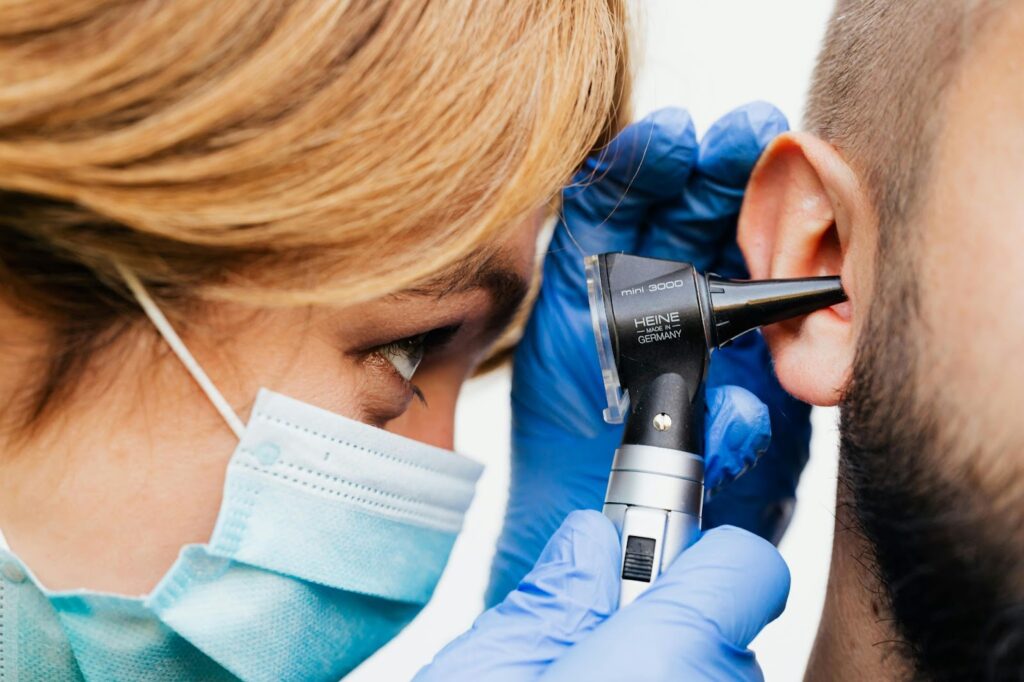In a world saturated with sound, the ability to hear is a treasure that many of us might take for granted. However, for those grappling with hearing problems, everyday sounds can become elusive, leading to challenges in communication and interaction. This blog post sheds light on six typical hearing issues and explores practical solutions to help those affected regain their auditory clarity. Understanding these issues is crucial whether you’re experiencing the first signs of hearing loss or are supporting a loved one through their hearing health journey. Join us as we explore hearing problems, their effects, and the steps you can take to address them effectively.
Understanding Hearing Loss
Hearing loss is more than just the inability to hear sounds clearly; it’s a complex condition with various causes and manifestations. Often, hearing loss develops gradually, making it difficult to notice until significant damage has occurred. It’s essential to recognize the symptoms early. According to the specialists behind Owl Hearing, these may include muffled speech, difficulty understanding words amid background noise, and frequently asking others to repeat themselves. Educating yourself about the types and degrees of hearing loss will empower you to seek appropriate treatment options. The impact of untreated hearing loss extends beyond the physical realm, affecting social interactions and emotional well-being. Addressing this issue can improve individuals’ quality of life and help them maintain meaningful connections with others.
- Tinnitus and Its Impact
Tinnitus affects millions worldwide and can be both frustrating and debilitating. While the exact cause of tinnitus varies, it is often linked to noise exposure, ear infections, or underlying health conditions. Managing tinnitus involves both lifestyle changes and medical interventions. Effective strategies include reducing exposure to loud sounds, managing stress levels, and using sound therapy. Sometimes, hearing aids equipped with masking features can help alleviate the symptoms. Understanding that tinnitus is a common issue can comfort those experiencing it.
- Conductive Hearing Loss Demystified
Common causes of hearing loss include wax buildup or malformations of the ear structure. These hearing losses often result in reduced sound levels. Treatment often involves addressing the underlying issue. For instance, removing earwax or treating an infection can restore normal hearing. In more severe cases, surgical intervention or hearing aids may be necessary. Recognizing conductive hearing loss early allows for prompt treatment and prevents further complications. Regular check-ups with an audiologist can help monitor ear health and ensure timely interventions.
- Sensorineural Hearing Loss Explained
Sensorineural hearing loss is the most common form and is usually permanent. Unlike conductive hearing loss, sensorineural hearing loss requires adjustments, but with the right tools and support, individuals can continue to engage actively in daily life. Continuous advancements in technology are making hearing solutions more accessible and practical.
- Mixed Hearing Loss and How to Handle It
Mixed hearing loss is a dual challenge requiring a comprehensive approach to diagnosis and treatment. Addressing mixed hearing loss typically involves a combination of medical and technological interventions. The first step is treating the conductive component, such as through surgery or medication. Subsequently, hearing aids or other assistive devices can improve overall hearing capability. Understanding mixed hearing loss can be complex, but with healthcare professionals’ guidance, individuals can find tailored solutions that address both aspects of their condition.
- Ear Infections and Their Consequences
Ear infections are a common ailment. They often result from bacteria or viruses and can affect the middle ear, leading to pain and fluid buildup. Treating ear infections promptly with antibiotics or other medications can prevent complications and preserve hearing. Regular monitoring and follow-up care are crucial, especially for children more susceptible to infections. Awareness and proactive care are essential to managing this common cause of hearing issues.
- Noise-Induced Hearing Loss
Noise-induced hearing loss occurs when the ear is exposed to loud noises over time, damaging the hair cells in the inner ear. This condition is prevalent among people who work in noisy environments or frequently attend loud events without adequate ear protection. Prevention is the best strategy against noise-induced hearing loss. Effective preventive measures include wearing earplugs or earmuffs in noisy environments and taking breaks from noise exposure. Once noise-induced hearing loss occurs, it is often irreversible. However, hearing aids and other assistive technologies can help manage the condition. Education on the importance of hearing protection is vital in reducing the incidence of this preventable issue.
Understanding common hearing problems and their solutions is crucial for maintaining auditory health and quality of life. The correct information and resources can guide you toward effective management, whether you’re dealing with hearing loss, tinnitus, or other ear-related issues. Individuals can address hearing challenges head-on by prioritizing hearing health, staying informed, and seeking professional advice. Remember, early intervention and proactive care are vital to preserving the gift of sound. Explore further resources and take action today to safeguard your hearing for the future.






